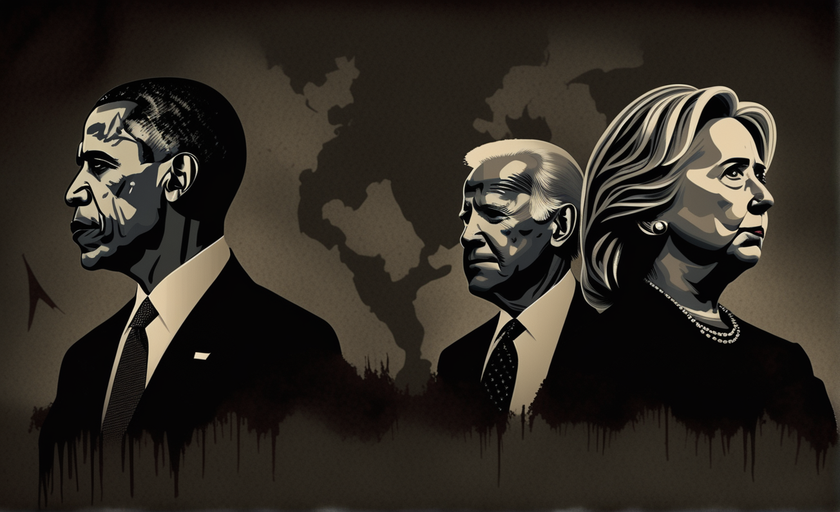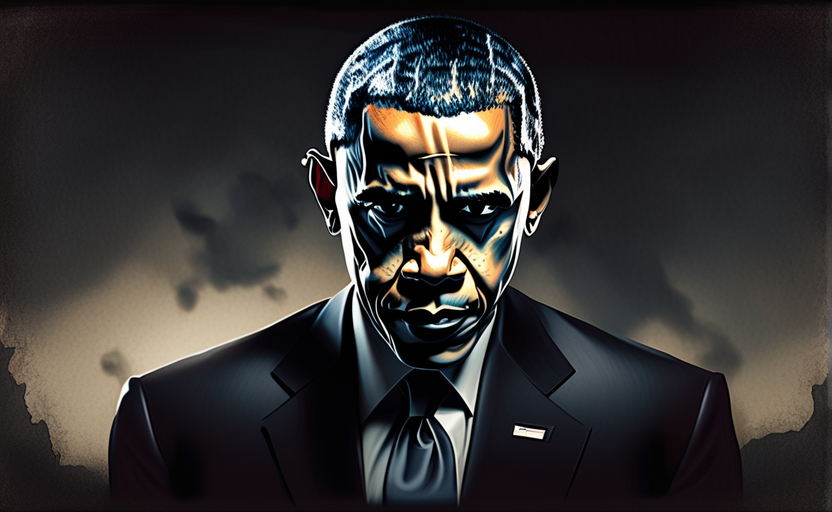Throughout history, humanity has been mesmerized by the mysteries of the skies, pondering the existence of extraterrestrial life. Countless reports of Unidentified Flying Objects (UFOs) have fueled debates about their origin and purpose. While mainstream theories often revolve around the notion of these crafts arriving from distant galaxies, there exists a compelling alternative hypothesis that proposes UFOs may, in fact, emanate from the inner depths of our own planet.
In this article, we explore the possibility that UFOs are not visitors from outer space but inhabitants from within the Earth. A hypothesis that centers around their primary objective: a desperate mission to prevent humanity from wielding the devastating power of nuclear weapons. We shall dig into the historical context of their increased sightings after the tragic bombings of Hiroshima and Nagasaki, examine references from the infamous Project Blue Book, and explore the unearthed warnings regarding mankind’s reckless flirtation with nuclear power.
The Inner Earth Theory
The Inner Earth Theory has fascinated explorers, writers, and thinkers throughout history, transcending cultures and civilizations. This captivating hypothesis posits that beneath the familiar surface of our planet lies an extraordinary world—a realm hidden from our eyes, yet teeming with life and advanced civilizations.
At the core of this theory is the belief that the Earth is not a solid mass but rather a hollow sphere with vast, cavernous spaces within. According to proponents of this concept, the inner Earth is home to a sophisticated and ancient civilization, sometimes referred to as “Agarthans” or “Hollow Earth inhabitants.” Their existence, they claim, predates recorded history, with roots stretching back thousands, if not millions, of years.
Early proponents of the Hollow Earth Theory include historical figures like Edmund Halley, the renowned British astronomer, and John Cleves Symmes Jr., an American army officer and explorer. Both men were driven by curiosity and a desire to explain anomalies in the Earth’s magnetic field. They posited that the Earth’s core might contain a hollow interior with habitable regions within.
One of the earliest literary works to popularize the concept of an inner Earth civilization was “Symzonia: A Voyage of Discovery” by Adam Seaborn (a pseudonym for Captain Adam Seaborn, Jr.). Published in 1820, the novel described a journey into the Earth’s core through an entrance at the North Pole, revealing a utopian society thriving beneath the surface.
While the Hollow Earth Theory has attracted ardent followers over the centuries, mainstream science has largely dismissed it as pseudoscience, citing a lack of empirical evidence to support the idea.
Despite scientific skepticism, proponents of the Inner Earth Theory remain undeterred, pointing to various anomalies, alleged eyewitness accounts, and unexplained phenomena to support their claims. Some enthusiasts suggest that governments and powerful organizations deliberately conceal evidence of this subterranean civilization to maintain control over knowledge and prevent societal upheaval.
Amid the diverse interpretations and discrepancies, one intriguing aspect of the Hollow Earth Theory aligns with the UFO phenomenon and its potential origins. Proponents of this theory propose that the enigmatic UFOs, rather than being extraterrestrial crafts from distant planets, could instead be advanced vehicles piloted by the inner Earth inhabitants. This idea may explain how a UFO can travel billions of miles through space without incident, only to crash on Earth. UFO’s originating from the inner Earth stand a greater chance of crashing.
The idea of UFOs emerging from within the Earth may seem audacious, but it adds an exciting layer of complexity to the discussion. According to this notion, the inner Earth civilization would possess highly advanced technology, enabling them to traverse great distances and appear as celestial visitors to us.
UFOs and Nuclear Warfare
The timeline of UFO sightings aligns intriguingly with significant moments in human history. Notably, after the United States dropped atomic bombs on the Japanese cities of Hiroshima and Nagasaki in 1945, there was a sudden surge in UFO sightings worldwide. This correlation has fueled the belief that these sightings were not coincidental but a direct response to humanity’s dangerous advancements in nuclear weaponry.
Some argue that the destructive power of nuclear weapons may have triggered concern among the inner Earth inhabitants, urging them to intervene and prevent further catastrophic consequences. While speculative, the correlation between nuclear events and increased UFO sightings is indeed remarkable and cannot be ignored.
Project Blue Book and UFO Warnings
Project Blue Book, a significant undertaking by the United States Air Force from 1952 to 1969, was a comprehensive study aimed at evaluating the validity of thousands of reported UFO sightings. Its creation was a response to the growing public fascination with unidentified flying objects and the need to determine whether these sightings posed any national security threats.
Over the course of its operation, Project Blue Book amassed a vast collection of data, including eyewitness accounts, photographs, radar readings, and physical evidence related to UFO encounters. While the project’s primary goal was to debunk as many sightings as possible, a significant percentage of cases remained unexplained or labeled as “unidentified.”
Within the classified archives of Project Blue Book, researchers have since claimed to have found peculiar messages and warnings concealed within the reports of UFO sightings. These messages, allegedly conveyed through telepathic or electromagnetic means, revolved around humanity’s burgeoning fascination with nuclear power.
In one documented incident, military personnel stationed at a nuclear facility reported a UFO sighting near the site. Soon after the encounter, witnesses described experiencing a strong electromagnetic interference that disrupted the facility’s communication systems and temporarily disabled several nuclear missiles.
Following this unsettling event, an unexplained message, often attributed to the occupants of the UFO, was reportedly intercepted. The message contained a solemn warning about the dangers of nuclear power and the catastrophic consequences that could arise from its misuse. The implied implication was clear: humanity must exercise caution and wisdom in harnessing such immense energy, lest it lead to irreversible devastation.
These alleged encounters with UFOs around nuclear facilities and the accompanying messages raise intriguing questions. Could these inner Earth beings or extraterrestrial visitors be cautioning us against the hubris of nuclear power? Are they imploring us to reevaluate our relationship with the planet and the destructive potential of our scientific advancements?
While mainstream science typically dismisses such claims as anecdotal or speculative, proponents of the UFO phenomenon assert that Project Blue Book’s hidden findings represent a poignant message. A message that transcends conventional understanding and challenges us to contemplate our responsibilities as stewards of Earth and its resources.
The Warning and Plea
In light of the Inner Earth Theory and the correlation between UFO sightings and nuclear events, it is essential to consider the message that these supposed inner Earth inhabitants might wish to convey.
Their objective, as far as we can infer, seems to be twofold: first, to caution us against the reckless use of nuclear weapons that could lead to their and our annihilation and, second, to urge us to reevaluate our relationship with the planet and all living beings that call it home.
Final Thoughts
In the depths of the UFO phenomenon lies a narrative that transcends the boundaries of science and fiction, intertwining with the very essence of human existence. The possibility of UFOs hailing from the inner Earth, their objective to protect us from the destructive ramifications of nuclear weapons, and their plea for a more harmonious coexistence with the planet leave us with profound questions and reflections.
While some may dismiss the Inner Earth Theory as fanciful or conspiratorial, we must recognize that history has proven the power of imagination and paradigm-shifting ideas. Countless scientific discoveries and societal advancements were once considered implausible until evidence and innovative thinking brought them into the realm of reality. As we strive to unravel the mysteries of the universe, we must keep our minds open to possibilities beyond the confines of conventional knowledge.
The correlation between UFO sightings and nuclear events should not be ignored. It serves as a stark reminder of the destructive potential we hold in our hands and the urgent need for global cooperation in abolishing nuclear weapons. Whether the sightings are from inner Earth dwellers or extraterrestrial beings from distant galaxies, the message is clear: humanity must transcend its differences, learn from the past, and work together to secure a future free from the shackles of nuclear annihilation.
The mysterious UFO phenomenon, regardless of its origin, has the power to unite us in awe and curiosity. It reminds us of the microscopic nature of our existence in the grand cosmos and challenges us to contemplate our place in the cosmic order. Instead of succumbing to fear or dismissing the unknown, let us embrace the wonder of the universe and embark on a journey of understanding and enlightenment.
In the pursuit of knowledge and truth, skepticism and scrutiny are essential pillars of scientific inquiry. However, we must avoid dismissing ideas prematurely simply because they challenge our existing paradigms. The Inner Earth Theory, though speculative, serves as a metaphorical call to arms for humanity to seek harmony, compassion, and wisdom in an age marred by division and environmental degradation.
Furthermore, even if the idea of UFOs from the inner Earth is not supported by evidence, their imagined existence holds symbolic significance. They embody the archetype of sympathetic beings watching over us, reminding us that the choices we make have consequences that ripple far beyond our comprehension. These choices extend not only to the immediate impact on our own species, but to the intricate web of life that sustains us on this magnificent planet.
As we gaze at the night sky, pondering the vastness of space, let us also look within ourselves, exploring the depths of our consciousness and understanding our interconnectedness with all living beings. Regardless of the origin of UFOs, the overarching message remains universal: we are guardians of this planet and entrusted with the responsibility to preserve and protect it for generations to come.
In the spirit of exploration and enlightenment, let us continue our quest to decipher the mysteries of the universe, while also embracing the beauty and complexity of our own home – Earth. By nurturing empathy, compassion, and stewardship, we can shape a future that honors the ancient wisdom of our planet’s hypothetical inner inhabitants and fulfills their plea for peace, harmony, and the responsible use of our knowledge and power.
Whether the mystery of UFOs from the inner Earth remains a fascinating speculation or unveils itself as a profound reality, the lessons they offer are timeless and imperative. Only by heeding these messages and uniting as a global community can we hope to create a world that is truly worthy of the cosmic wonders that surround us. Let the quest for understanding and the pursuit of a better future be our shared journey as we navigate the vastness of the universe, both outward and inward, with humility and awe.




